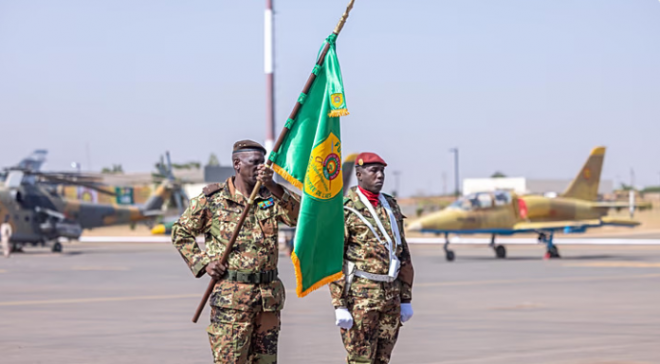Inside KDF's strategic plan to withdraw from Somalia
NAIROBI, Kenya - A robust strategic exit plan by the Kenya Defense Forces [KDF] from Somalia has been mooted, a book recently published has revealed, with just over 15 months before the official withdrawal timeline.
The KDF troops first invaded Somalia in pursuit of Al-Shabaab militants in 2011 but would be absorbed to African Union Mission in Somalia a year later. Since then, the team has liberated dozens of strategic towns among them Kismayo.
But in the process, the troops have also suffered casualties especially in El-Adde and Kulbiyow army bases in 2016 and 2017 respectively, following an assault by the Al-Shabaab militants. A total of 400 troops have since lost their lives.
And as part of efforts to beat AMISOM's scheduled exit date in 2021, the KDF has already outlined numerous strategies to guide the forces out of Somalia. Most of the plans are highlighted in "War for Peace: Kenya’s Military in the African Mission in Somalia, 2011-2020", a book which was launched on Friday by immediate former Chief of Defense Forces, Gen. Samson Mwathethe.
One of the critical pillars is engineering reforms in the Somali National Army [SNA], which will be entrusted with the restoration of peace and order. Already, the KDF troops have established a camp for SNA in Dhobley, which is also acting as a Forward Operating Base.
The second and most important pillar is securing the Jubaland state from the Al-Shabaab militants, including blocking of their supply routes. The KDF team mans Sectors II and VI mainly in Jubaland, which is used as a buffer zone in the fight against Al-Shabaab.
Currently, the KDF team works closely with regional leader Sheikh Ahmed Madobe, whose relationship with federal leader Mohamed Abdullahi Farmajo has substantially deteriorated in recent months. The two are embroiled in power tussles within Gedo region.
“This will involve securing routes in Jubbaland accessible to and used by al-Shabaab, including areas in Jilib, the roads to Kenyan border points [Liboi, El-Wak, Mandera, Gherille and Boni forest] and Indian Ocean ports of Ras Kamboni, Kuday, Kismayu and Barawe,” reads the book.
The strategy, KDF argues, will bring harmony between Jubaland residents and the rest of Somalia. Sheikh Madobe reconciled with his regional competitors a fortnight ago, significant progress in KDF's intended plan to withdraw from the war-torn nation.
But to secure Kenyans from Al-Shabaab, the KDF has also come up with the third and fundamental strategy of keeping the Kenya-Somalia porous border safe from frequent unchecked cross-border movements, which encourage insecurity in northeastern.
In the pillar, the KDF team is establishing a comprehensive management control system to secure the border. Unlike the previous plan to erect a fence, the KDF team will now focus on “surveillance, trenches, roads and chain-link fences”.
Some of the regions which will be closely guarded through establishment of immigration offices include Mandera, El-Wak, Gherille, Liboi, Kolbio and Kiunga in northern Lamu, the book adds. There is no formal immigration center along the border.
In December last year, President Uhuru Kenyatta unveiled Modika Barracks in Garissa, which hosts the 6th battalion. The barracks is currently being used as Forward Operating Base by some of the 3,500 KDF troops in Somalia, Gen. Robert Kibochi, who took over as KDF chief, had said.
She of the operations of multi-agency command and control centers in Nairobi, Mombasa, Wajir, Moyale, Busia, Namanga, Lamu and Lokichoggio is the fourth pillar under the withdrawal plan. This will involve enhancing intelligence and security operations, the book notes.
Also, the team is ready to work with local networks to trace and tame Al-Shabaab militants, who have encroached most parts of the northeastern region. At a meeting with northeastern leaders early this year, President Kenyatta asked them to ask "residents to cooperate with security agencies".
The fifth pillar involves partnerships through strengthening the agreement involving Kenya, Somalia, and Ethiopia on common security concerns and agenda. It also involves enhancing collective security by involving neighbors in the Horn of Africa through the Inter-Governmental Authority for Development and the East African Community.
The AMISOM force leadership is reviewing the withdrawal strategy, which largely depends on the preparedness of the SNA troops. Besides training from the AU forces, the Somali troops also work closely with the US, Turkey and Britain.
“Neighbouring countries are more concerned about the possibility of the resurgence of al-Shabaab or the rise of a similar extremist movement after the end of Amisom in 2020,” the book says.
“These legitimate concerns are informed by the history of interventions in Somalia, Iraq, Afghanistan and other countries.”
Currently, there are close to 22,000 troops working under the command of Lt. General Tigabu Yilma, an Ethiopian national. The troops have secured most parts of Somalia apart from the central and southern sections of the country.
Last week, there were reports that the ENDF troops were planning last assault on Al-Shabaab in sections of Southwest and Gedo, before the official exit of the AU forces from Somalia. The country is also expected to hold elections in December.
GAROWE ONLINE








